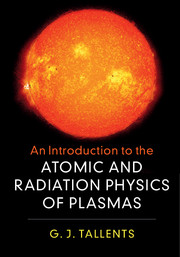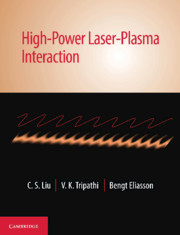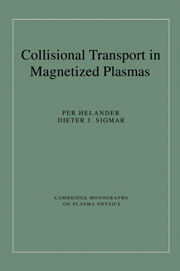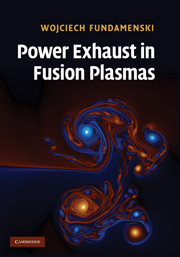Ideal MHD
£74.99
- Author: Jeffrey P. Freidberg, Massachusetts Institute of Technology
- Date Published: June 2014
- availability: Available
- format: Hardback
- isbn: 9781107006256
£
74.99
Hardback
Other available formats:
eBook
Looking for an inspection copy?
This title is not currently available on inspection
-
Comprehensive, self-contained, and clearly written, this successor to Ideal Magnetohydrodynamics (1987) describes the macroscopic equilibrium and stability of high temperature plasmas - the basic fuel for the development of fusion power. Now fully updated, this book discusses the underlying physical assumptions for three basic MHD models: ideal, kinetic, and double-adiabatic MHD. Included are detailed analyses of MHD equilibrium and stability, with a particular focus on three key configurations at the cutting-edge of fusion research: the tokamak, stellarator, and reversed field pinch. Other new topics include continuum damping, MHD stability comparison theorems, neoclassical transport in stellarators, and how quasi-omnigeneity, quasi-symmetry, and quasi-isodynamic constraints impact the design of optimized stellarators. Including full derivations of almost every important result, in-depth physical explanations throughout, and a large number of problem sets to help master the material, this is an exceptional resource for graduate students and researchers in plasma and fusion physics.
Read more- Includes extensive discussion of the stellerator, including MHD equilibrium and stability, neoclassical transport, and the ways in which omigeneity, quasi-symmetry, and the quasi-isodynamic properly impact optimal stellerator design
- Addresses numerous practical issues relating to fusion configuration stability, such as the calculation of relevant eigenfrequencies and eigenfunctions, stability testing via the Energy Principle procedure, and specific instabilities such as sawtooth oscillations, major disruptions, ELMs, and resistive wall models
- Presents tropics in enough depth for readers not to have to refer to large amounts of source material to truly master the physics
Customer reviews
Not yet reviewed
Be the first to review
Review was not posted due to profanity
×Product details
- Date Published: June 2014
- format: Hardback
- isbn: 9781107006256
- length: 740 pages
- dimensions: 252 x 173 x 33 mm
- weight: 1.61kg
- contains: 192 b/w illus.
- availability: Available
Table of Contents
1. Introduction
2. The ideal MHD model
3. General properties of ideal MHD
5. Equilibrium: one-dimensional configurations
6. Equilibrium: two-dimensional configurations
7. Equilibrium: three-dimensional configurations
8. Stability: general considerations
9. Alternate MHD models
10. MHD stability comparison theorems
11. Stability: one-dimensional configurations
12. Stability: multi-dimensional configurations
Appendix A. Heuristic derivation of the kinetic equation
Appendix B. The Braginskii transport coefficients
Appendix C. Time derivatives in moving plasmas
Appendix D. The curvature vector
Appendix E. Overlap limit of the high b and Greene–Johnson stellarator models
Appendix F. General form for q(y)
Appendix G. Natural boundary conditions
Appendix H. Upper and lower bounds on dQKIN.
Sorry, this resource is locked
Please register or sign in to request access. If you are having problems accessing these resources please email [email protected]
Register Sign in» Proceed
You are now leaving the Cambridge University Press website. Your eBook purchase and download will be completed by our partner www.ebooks.com. Please see the permission section of the www.ebooks.com catalogue page for details of the print & copy limits on our eBooks.
Continue ×Are you sure you want to delete your account?
This cannot be undone.
Thank you for your feedback which will help us improve our service.
If you requested a response, we will make sure to get back to you shortly.
×







